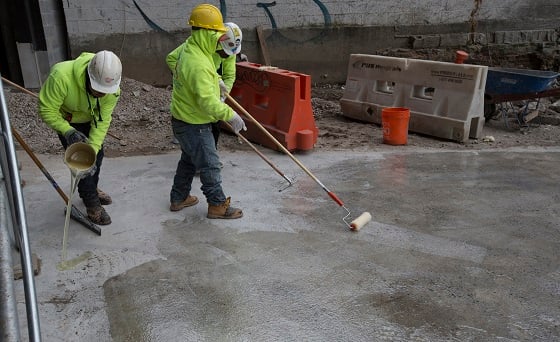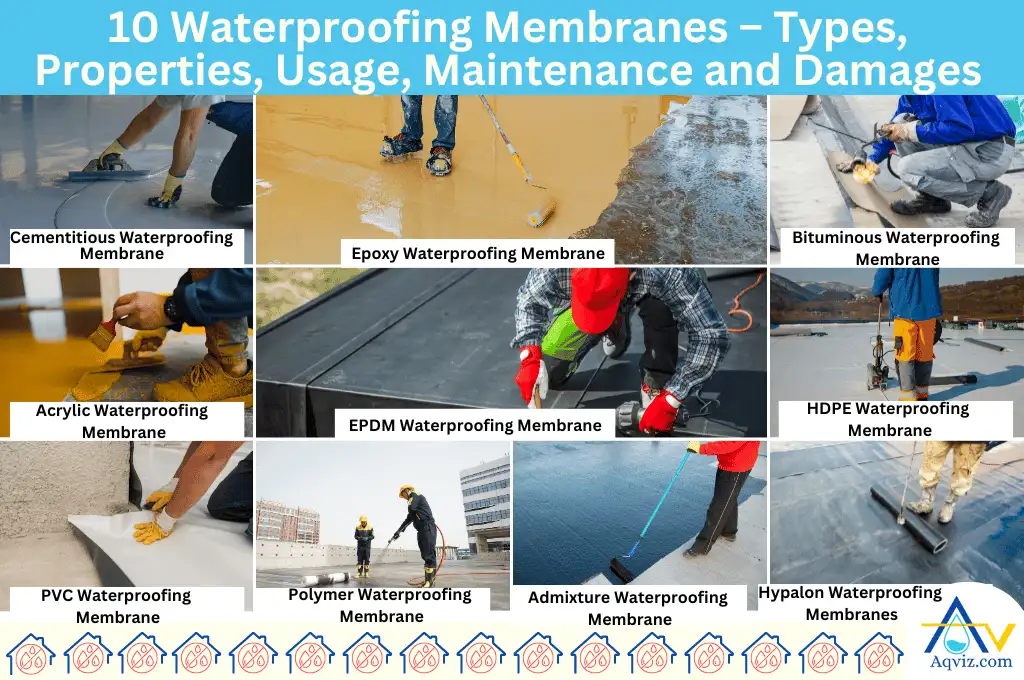Why Water Solutions Omaha Is Crucial for Basement Health
Wiki Article
Sorts of Waterproofing: Discovering the Numerous Techniques and Their Applications
Waterproofing is a crucial facet of building and construction and maintenance. It safeguards structures from the damaging effects of water damage. There are numerous methods available, each with its unique applications and advantages. From membrane systems to cementitious options, comprehending these alternatives is vital for efficient execution. The option of waterproofing method can significantly influence toughness and long life. Exploring these different strategies discloses their unique benefits and potential difficulties, triggering more factor to consider of optimal remedies.Membrane Waterproofing Systems
Membrane layer waterproofing systems work as a critical obstacle versus water breach in various structures. These systems generally include thin sheets made from products like rubber, thermoplastic, or bitumen, which are applied to surfaces to stop moisture infiltration. They can be set up over or listed below grade and are especially efficient in locations prone to high water exposure, such as basements, roofs, and foundations.The setup process involves cleaning the substratum, using adhesives or primers, and precisely fitting the membrane to guarantee complete insurance coverage. Membrane systems can be either completely stuck, mechanically affixed, or laid loose, depending on the particular needs of the project. They supply toughness and adaptability, fitting architectural activities without jeopardizing their waterproofing capacities. These systems can be reinforced with additional layers for boosted security. Inevitably, membrane waterproofing systems are essential for guarding structures against water damages and maintaining long-lasting honesty.Liquid-Applied Waterproofing Coatings
Liquid-applied waterproofing finishings give a functional service for safeguarding surface areas from water seepage - Foundation waterproofing Omaha. These finishes are composed of liquid materials that, when applied, form a seamless, adaptable membrane. Their flexibility enables application on numerous substrates, including concrete, steel, and timber. The coverings can be used in varied atmospheres, from domestic to commercial setups, making them ideal for roofs, foundations, and below-grade structures.One substantial benefit of liquid-applied finishes is their capability to satisfy irregular shapes and permeate cracks, developing a durable barrier against dampness. They commonly exhibit excellent adhesion homes and resistance to UV radiation, making certain long life and durability. Furthermore, the application process is usually uncomplicated, permitting quick installment and reduced labor prices. This technique additionally lessens the risk of water pooling, as the continuous layer successfully directs water far from prone areas. Overall, liquid-applied waterproofing layers are an efficient selection for extensive water securityCementitious Waterproofing Solutions

Cementitious waterproofing services supply a robust alternative for frameworks have a peek at this site requiring trusted moisture security. These systems mostly make use of a mix of concrete, sand, and chemical ingredients to produce a waterproof barrier. They are usually used to surfaces such as concrete wall surfaces, structures, and floors, providing a long lasting, resilient protection versus water intrusion.One of the vital benefits of cementitious waterproofing is its simplicity of application; it can be used using a brush, roller, or spray, making it ideal for different job sizes. Furthermore, this approach works with numerous surfaces and can usually be used in combination waterproofing over bathroom tiles with various other waterproofing techniques.Cementitious options are specifically effective in environments where water exposure is an issue, such as basements or below-grade frameworks. Their superb attachment properties assure that they bond well with substratums, providing a strong and impenetrable layer versus wetness penetration.
Bentonite Waterproofing
Bentonite waterproofing is a highly effective technique that utilizes sodium bentonite clay to create a natural barrier against water. This technique makes use of the distinct buildings of bentonite, which expands upon call with water, securing any kind of potential leaks and avoiding wetness infiltration. It is frequently utilized in different applications, including structure walls, passages, and maintaining walls, where water resistance is essential.Bentonite can be used in a number of kinds, such as panels or blankets, giving versatility in installment. Its capability to self-seal makes it an eye-catching alternative for locations subject to shifting soil or rising and falling water degrees. In addition, bentonite waterproofing is environmentally pleasant, as it is a natural product that does not introduce hazardous chemicals right into the environments.Drain and Exterior Waterproofing Equipments
Reliable waterproofing commonly includes a mix of methods, consisting of water drainage and exterior systems. Drain systems, such as French drains and sump pumps, are created to redirect water far from frameworks, lowering hydrostatic pressure against structures. These systems are necessary in preventing water buildup that can lead to structural damage and mold and mildew growth.External waterproofing, on the other hand, entails her response using protective obstacles to the structure's exterior. Methods such as the installment of water-proof membrane layers, finishes, or sealers can assist prevent water infiltration. This approach not just secures the foundation however additionally enhances the total durability of the structure.Together, water drainage and outside waterproofing systems create a thorough solution to manage water successfully. By executing these methods, homeowner can protect their investments against the destructive impacts of moisture, ensuring long-lasting security and safety for their buildings.Frequently Asked Inquiries
How Do I Choose the Right Waterproofing Approach for My Task?
Selecting the ideal waterproofing technique depends upon aspects such as job kind, environmental problems, budget, and wanted longevity. Reviewing these facets permits educated decisions tailored to specific needs and requirements.
Can Waterproofing Be Applied in Winter Conditions?
Waterproofing can be applied in winter conditions, yet it requires details materials and strategies. Cold temperature levels may influence healing times and adhesion, demanding cautious option of products made for low-temperature application.
What Are the Common Indications of Waterproofing Failing?
Typical indicators of waterproofing failing include visible water discolorations, peeling off paint, wet odors, mold development, and splits in walls or structures. Water Solutions Omaha. These indications suggest that moisture is passing through the barrier, jeopardizing its effectivenessFor How Long Does Waterproofing Last Before Requiring Upkeep?
The longevity of waterproofing varies, typically lasting between 5 to one decade. Variables such as worldly top quality, environmental conditions, and upkeep methods influence its longevity, necessitating periodic examinations to assure effective security against water breach.Exist Eco-Friendly Waterproofing Options Available?
The question of green waterproofing choices discloses a growing rate of interest in sustainable materials (Basement waterproofing Omaha). Numerous natural materials, such as plant-based sealers and recycled items, offer effective remedies while decreasing environmental influence, attracting eco conscious customersReport this wiki page